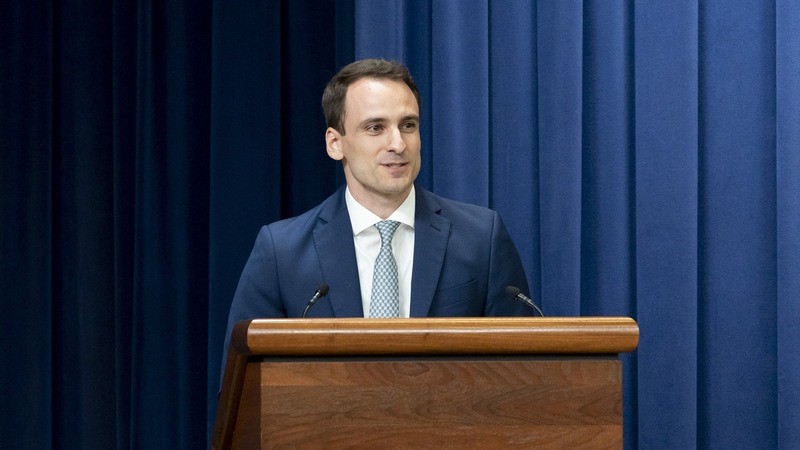
The White House’s newly issued AI Action Plan looks to cement U.S. dominance in artificial intelligence, but White House Office of Science and Technology Policy (OSTP) Director Michael Kratsios said on Wednesday that the “ultimate solution” to win the AI race requires Congress.
Speaking at a July 30 event hosted by the Center for Strategic and International Studies (CSIS), Kratsios explained that the next phase of U.S. AI leadership hinges on legislative follow-through.
For example, Kratsios said he and President Donald Trump agree that AI regulations “should be uniform across the country” – a sentiment that was originally reflected in one of the drafts of the Big Beautiful Bill reconciliating funding package in the form of a 10-year moratorium on state-level AI regulation. Ultimately, that proposal did not make it into the final version that was passed into law.
“Having a patchwork of regulations across the entire country just doesn’t make sense and is not pro-innovation,” Kratsios said. “If we do have AI regs, they should be uniform across the country, and essentially try to preempt states from being able to do that. How that plays out and how we’re able to find consensus with the Hill remains to be determined, and we look forward to working with the Hill on all of these issues.”
Nevertheless, Kratsios said he is looking to maximize what the White House can do in terms of shaping the state-level AI regulation environment.
“There’s not as much as you think you could do alone from the executive branch. I think the ultimate solution does require Congress and does require some sort of bipartisan action,” Kratsios said.
“So, that’s what we’re going to try to explore, and there are lots of thoughts about this, both on our side of the aisle and on the [Democratic] side. So, hopefully we can work together on a solution,” he added.
While he said the White House doesn’t have a specific set of legislative priorities for AI, he did say that action from Congress when it comes to state preemption would be helpful.
“Anything related to preemption is something that’s going to be mostly in their court instead of ours, and we look forward to working with them to kind of think through some of those preemption issues,” Kratsios said.
Another area in which Kratsios said action from Congress could be useful is on the issue of using copyrighted materials – such as books, songs, articles, etc. – to train large language models.
Whether or not it is “fair use” to use copyrighted material in the training of AI models is something that is currently playing out in the courts.
“There’s not a lot the executive branch can do on that. Understanding and interpreting what ‘fair use’ is is now sitting in the courts,” Kratsios said. “But, you know, that’s obviously something that, if the Hill wants to think about, that’s an area that they, you know, although quite controversial, is an area that they could potentially try to tackle.”
Additionally, he said that there is an opportunity for Congress to take legislative action on the National Institute of Standards and Technology’s (NIST) Center for AI Standards and Innovation (CAISI).
The center, originally called the U.S. Artificial Intelligence Safety Institute (AISI), was created in 2023 by the Biden administration’s AI executive order. However, the Trump administration rebranded the AISI to the CAISI in June to emphasize an embrace of AI innovation.
“With the reforms that we’ve made to CAISI, there is obviously an opportunity for the Hill to think about how to legislate on the standards institute and give it sort of statutory cover for some of the actions that we want to be doing long term,” Kratsios said.
Finally, the OSTP director said that Congress can always do more to think about research and development (R&D) funding, and how the United States “can prioritize AI-related funding across [the National Science Foundation] and lots of other agencies.”
